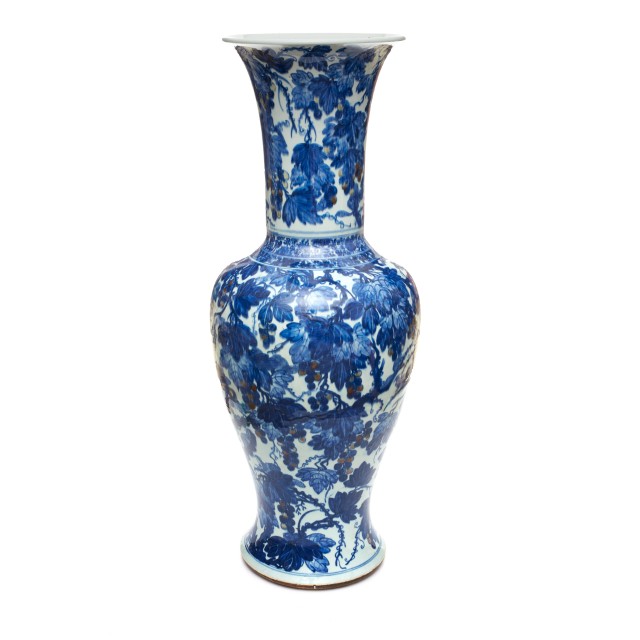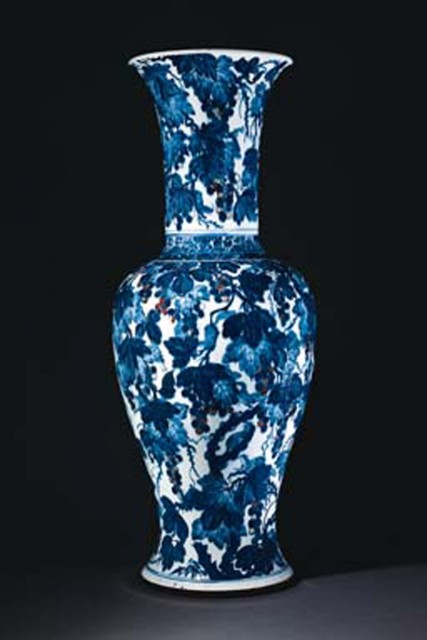Vase

Photography by Synthescape, Digital image © Asia Society

Photography by Lynton Gardiner, Digital image © Asia Society
Vase
17th century
China, Jiangxi Province
Porcelain painted with underglaze cobalt blue and copper red (Jingdezhen ware)
H. 39 1/2 x Diam. 15 in. (100.3 x 38.1 cm)
Asia Society, New York: Mr. and Mrs. John D. Rockefeller 3rd Collection, 1979.185
Licensing inquiries
This large, zun-shaped vase painted with a design of squirrels and grapes may represent an important link between Transitional wares, produced during the changeover from the Ming to the Qing dynasty, and early imperial Qing ceramics. Smaller porcelains in this shape produced during the reign of the Kangxi emperor (1622 - 1723) are common, but the lively manner in which the squirrels and grapes are painted is more comparable to the type of painting found on Transitional wares than to the structured compositions and precise images on Kangxi porcelains. The motif of squirrels and grapes is a rebus wishing the owner of the jar longevity: in Chinese the words for squirrel and pine tree are pronounced the same, and in this motif, the squirrel replaces the pine tree as a symbol for old age. The words for grape and peach are also homonyms, and here the grape replaces the peach as a symbol of immortality.


